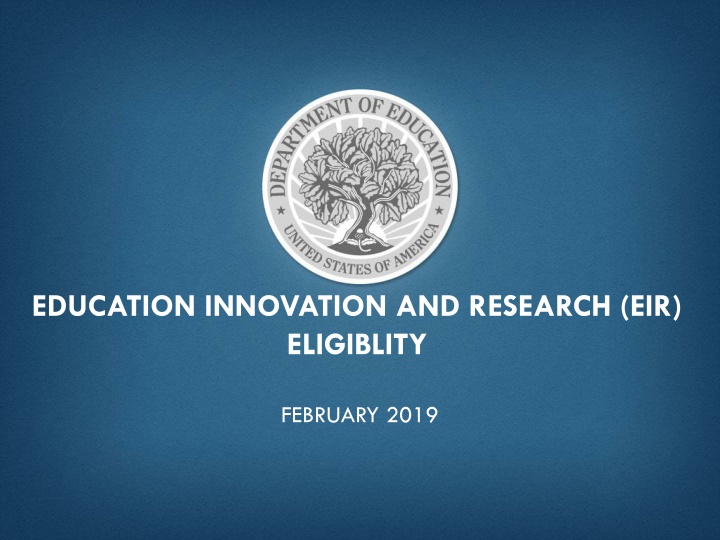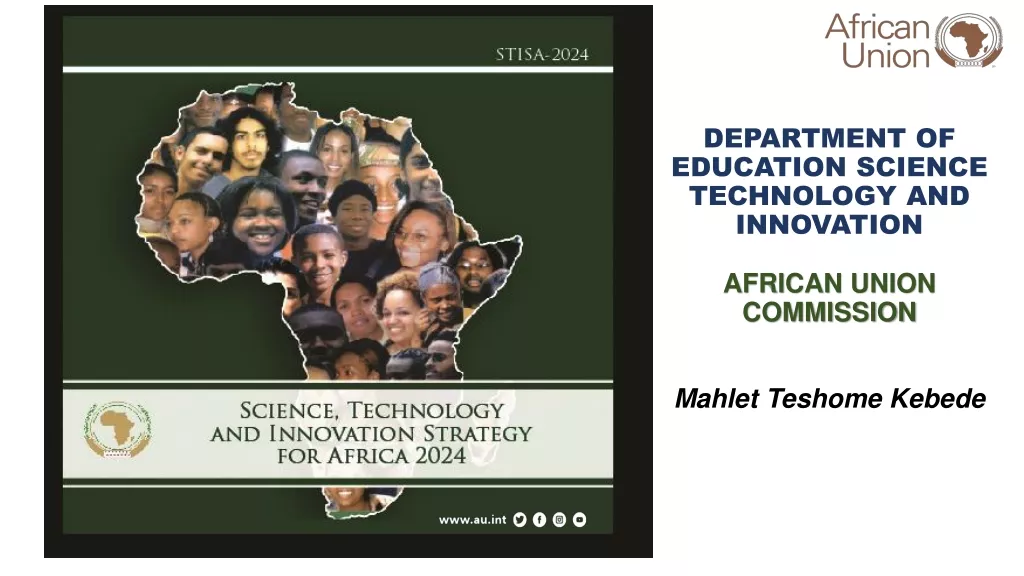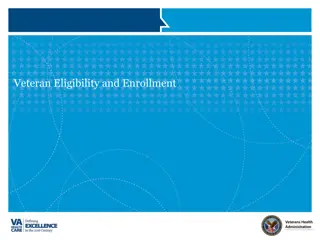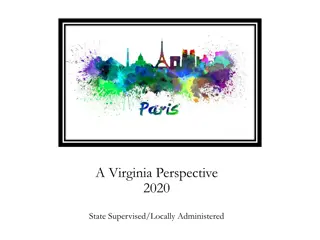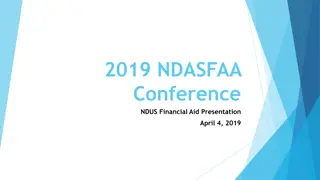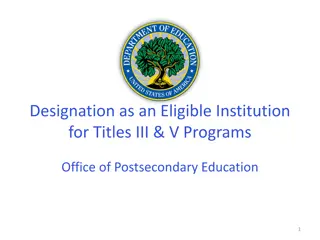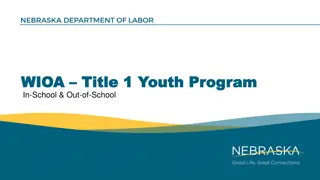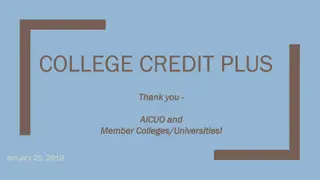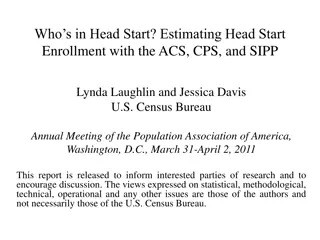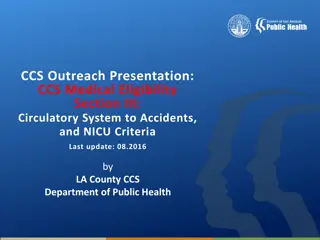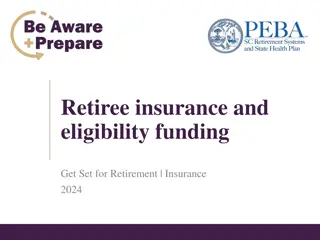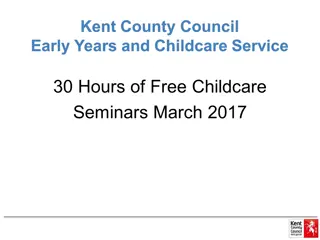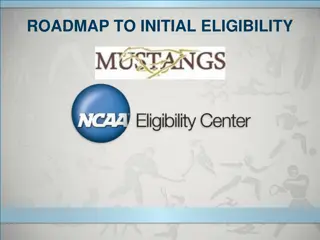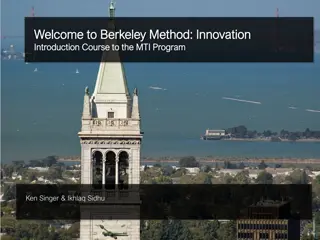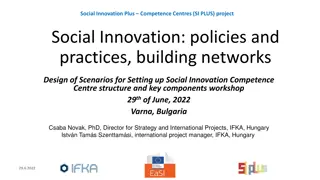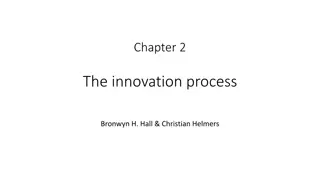Education Innovation and Research Eligibility Criteria
Eligibility requirements for the Education Innovation and Research (EIR) program in February 2019 include criteria for local educational agencies (LEAs), State educational agencies (SEAs), the Bureau of Indian Education (BIE), nonprofit organizations, and partnerships with various entities. LEAs encompass public boards of education or public authorities responsible for the administration or service function of public elementary or secondary schools. SEAs are the agencies primarily overseeing public schools at the state level. Additionally, the definition of a nonprofit organization excludes benefiting private shareholders or entities.
Download Presentation

Please find below an Image/Link to download the presentation.
The content on the website is provided AS IS for your information and personal use only. It may not be sold, licensed, or shared on other websites without obtaining consent from the author.If you encounter any issues during the download, it is possible that the publisher has removed the file from their server.
You are allowed to download the files provided on this website for personal or commercial use, subject to the condition that they are used lawfully. All files are the property of their respective owners.
The content on the website is provided AS IS for your information and personal use only. It may not be sold, licensed, or shared on other websites without obtaining consent from the author.
E N D
Presentation Transcript
EDUCATION INNOVATION AND RESEARCH (EIR) ELIGIBLITY FEBRUARY 2019
WHO IS ELIGIBLE TO APPLY? Eligible Applicants: (a) A local educational agency (LEA); (b) A State educational agency (SEA); (c) The Bureau of Indian Education (BIE); (d) A consortium of SEAs or LEAs; (e) A nonprofit organization; and (f) An SEA, an LEA, a consortium described in (d), or the BIE, in partnership with-- (1) A nonprofit organization; (2) A business; (3) An educational service agency; or (4) An institution of higher education. Note: An LEA includes a public charter school that operates as an LEA. 2
WHAT IS A LOCAL EDUCATIONAL AGENCY (LEA)? (a) In General. A public board of education or other public authority legally constituted within a State for either administrative control or direction of, or to perform a service function for, public elementary schools or secondary schools in a city, county, township, school district, or other political subdivision of a State, or of or for a combination of school districts or counties that is recognized in a State as an administrative agency for its public elementary schools or secondary schools. (b) Administrative Control and Direction. The term includes any other public institution or agency having administrative control and direction of a public elementary school or secondary school. (c) Bureau of Indian Education Schools. The term includes an elementary school or secondary school funded by the Bureau of Indian Education but only to the extent that including the school makes the school eligible for programs for which specific eligibility is not provided to the school in another provision of law and the school does not have a student population that is smaller than the student population of the local educational agency receiving assistance under the ESEA with the smallest student population, except that the school shall not be subject to the jurisdiction of any State educational agency (as defined in the notice) other than the Bureau of Indian Education. (d) Educational Service Agencies. The term includes educational service agencies and consortia of those agencies. (e) State educational agency. The term includes the State educational agency in a State in which the State educational agency is the sole educational agency for all public schools. 3
WHAT IS A STATE EDUCATIONAL AGENCY (SEA)? State educational agency means the agency primarily responsible for the State supervision of public elementary schools and secondary schools. 4
WHAT IS A NONPROFIT? Nonprofit, as applied to an agency, organization, or institution, means that it is owned and operated by one or more corporations or associations whose net earnings do not benefit, and cannot lawfully benefit, any private shareholder or entity. Note: Institutions of higher education are not automatically included as nonprofits. 5
IS AN INSTITUTION OF HIGHER EDUCATION ELIGIBLE TO APPLY TO EIR? NO if it does not have nonprofit status YES if it is a nonprofit and can include an Internal Revenue Service 501(c)(3) determination letter in the application, or can provide any of the other documentation set out in 34 CFR 75.51. if the application is directly submitted by a college or university foundation with nonprofit status ---if the application is submitted by an SEA, an LEA, or the BIE, then the institution of higher education may participate as a partner in an application. YES OTHER 6
HOW TO VERIFY NONPROFIT STATUS? Consistent with 34 CFR 75.51(b), an entity may show that it is a nonprofit organization (as defined under 34 CFR 77.1(c)) by providing any of the following: (1) Proof that the Internal Revenue Service currently recognizes the applicant as an organization to which contributions are tax deductible under section 501(c)(3) of the Internal Revenue Code; (2) A statement from a State taxing body or the State attorney general certifying that: (i) The organization is a nonprofit organization operating within the State; and (ii) No part of its net earnings may lawfully benefit any private shareholder or individual; (3) A certified copy of the applicant's certificate of incorporation or similar document if it clearly establishes the nonprofit status of the applicant; or (4) Any item described in paragraphs (b)(1) through (3) of this section [immediately above] if that item applies to a State or national parent organization, together with a statement by the State or parent organization that the applicant is a local nonprofit affiliate. 7
PRACTICE WHO CAN APPLY? (1) Yes/No/ Maybe Entity Type Comment My Franchise Public Charter School Distinguished University (nonprofit) Scores Go Up! Tutors (a commercial business) The Bureau of Indian Education (elementary or secondary 8
PRACTICE WHO CAN APPLY? (1 - ANSWERS) Yes/No/ Maybe Entity Type Comment My Franchise Public Charter School Yes if the charter school has LEA status; otherwise, no. Maybe Yes, if the college or university meets the definition of nonprofit, or an affiliated nonprofit can apply. Distinguished University Maybe Scores Go Up! Tutors (a commercial business) Businesses can be partners in a project but cannot be the lead applicant. No The Bureau of Indian Education The BIE may apply, but BIE schools may apply only if they meet the definition of LEA in the application notice. Yes 9
PRACTICE WHO CAN APPLY? (2) Yes/No/ Maybe Entity Type Comment Big Grey Apple School (a single school) Olympia Forest Consortium of Five Distinct LEAs Mary Smith (a private citizen) A State Office of Children and Family Services 10
PRACTICE WHO CAN APPLY? (2-ANSWERS) Yes/No/ Maybe Entity Type Comment Big Grey Apple School (a single school) LEAs may apply, but not individual schools. No Olympia Forest Consortium of Five Distinct LEAs One LEA in the consortium will need to serve as the lead applicant. Yes Mary Smith (a private citizen) No Individuals are not eligible entities. A State Office of Children and Family Services SEAs may apply, but not other State agency offices. No 11
FUNDS RESERVED FOR RURAL APPLICANTS 25% of funds awarded under EIR will go to rural applicants that meet both of the required conditions (see next slide). Exception: EIR will reduce the funds available to rural applicants if the program does not receive a sufficient number of applications of sufficient quality. 12
WHO QUALIFIES AS RURAL APPLICANT? To qualify as a rural applicant under the EIR program, an applicant must meet both of the following requirements: (a) The applicant is-- (1) An LEA with an urban-centric district locale code of 32, 33, 41, 42, or 43, as determined by the Secretary; (2) A consortium of such LEAs; (3) An educational service agency or a nonprofit organization in partnership with such an LEA; or (4) A grantee described in clause (1) or (2) in partnership with a State educational agency; and (b) A majority of the schools to be served by the program are designated with a locale code of 32, 33, 41, 42, or 43, or a combination of such codes, as determined by the Secretary. 13
LOCALE CODES Locale codes are available on the National Center for Education Statistics (NCES) Search for Public School Districts website: https://nces.ed.gov/ccd/districtsearch/index.asp Individual school locale codes are also available on an NCES website: https://nces.ed.gov/ccd/schoolsearch/ 14
PRACTICE WHO QUALIFIES AS RURAL? Yes/No/ Maybe Entity Type Comment A State Educational Agency applying by itself with a program that will be implemented in 5 rural schools (all of which come from districts that have local codes of 32, 33, 41, 42, or 43) A Nonprofit organization partnering with an LEA with a local code of 32 that will be serving nearly half rural schools (with appropriate locale codes) and the rest urban ones. 15
PRACTICE WHO QUALIFIES AS RURAL? Yes/No/ Maybe Entity Type Comment A State Agency applying by itself with a program that will be implemented in 5 rural schools (all of which come from districts that have local codes of 32, 33, 41, 42, or 43 A State educational agency, unless it is the sole educational agency in a State for all public schools, does not fulfill part (a) of the rural applicant requirement. No A Nonprofit organization partnering with an LEA with a local code of 32 that will be serving nearly half rural schools (with appropriate locale codes) and the rest urban ones. The majority of schools served must be schools with a local code of 32, 33, 41, 42, or 43. Nearly half is not a majority and doesn t fulfill part (b) . No 16
EDUCATION INNOVATION AND RESEARCH (EIR) ELIGIBLITY - CONCLUSION FEBRUARY 2019
